
Nell’ultimo numero di SNEAKERS magazine abbiamo intervistato una delle più ricche e belle “regine di sneakers” al mondo, Julia Schoierer di Berlino. (ENGLISH VERSION FOLLOW AFTER THE IMAGES)
Come ti sei guadagnata il sopranome di “Sneakerqueen”?
Alcuni miei amici graffitari si erano accorti che ero sempre molto presa dalle mie sneakers e che ne possedevo un certo numero. Col passare degli anni molti di loro hanno incominciato a chiamarmi Regina delle sneakers, perché in quell’ambiente è normale usare soprannomi, e poche ragazze facevano caso alle sneakers. Questo nome divenne ben presto il mio Alter ego.
Ci sono altre “regine delle sneakers” in Germania?
Non che io sappia. L’ambiente dei veri conoscitori è abbastanza ristretto qui da noi. Conosco un paio di ragazze che si interessano di sneakers, pochissime sono addirittura collezioniste, ma non so di nessuna che sia mai andata veramente in profondità. Penso sia importante conoscere le origini, il retroterra culturale e storico delle cose che ti stanno veramente a cuore. In Germania non ho mai incontrato donne appassionate di sneakers fino a questo livello.
In che stato versa la cosiddetta “scena sneakers” in Germania?
Trattandosi del paese in cui sono nate due delle più importanti aziende del mercato mondiale (Adidas e Puma), mi piacerebbe che la Germania rivendicasse una posizione di maggiore specializzazione nel mondo sneakers, ma purtroppo sembra andare come in ogni parte del globo. Ecco cosa vedo: molte persone che seguono il trend e accumulano più scarpe della media; pochissimi intenditori veramente ambiziosi , e solo una parte di questi sono interessati a condividere il loro sapere e la loro passione.
La tua passione è diventata un lavoro negli anni?
Ha sicuramente influenzato e sostenuto il mio lavoro fino a questo momento.
In quanto fotografa ed esperta di comunicazione, molti miei clienti sono marchi di sneakers o aziende legate al settore. Il mio Alter Ego Sneakerqueen mi ha permesso di conoscere molte persone e a molti luoghi interessanti, come la mostra di sneakers a Barcellona nel 2009. Se non avessi partecipato a quell’evento, non ci saremmo mai incontrati e adesso non staremmo facendo questa intervista …
Compri e vendi sneakers per profitto quotidianamente?
No, ogni tanto vendo pochi modelli retro molto quotati, se per caso riesco a metterci le mani sopra senza fare lunghe code; ma ciò accade molto raramente.
Quante paia possiedi?
È destinato a rimanere un mistero, perché non le conto da anni. Ma penso che la cosa importante sia la selezione, non la quantità; non trovi?
Da quale modello non ti separerai mai?
Dalle mie Nike Air Jordan IV cemento, retro del 1999.
Qual è il carburante della tua passione: la nostalgia o altro?
Amore per il design, un po’ di nostalgia e di ego; infine, la mia ossessione per gli accessori
A proposito di nostalgia, quali erano i tuoi modelli preferiti da ragazza?
Usavo molto le Puma Suede, le Clyde e le Convers Pro Leather. Avevo anche delle Nike Trainer per giocare a tennis, penso che fossero delle TW ma non so di preciso perché mia madre le ha date via. Più tardi le Adidas Forum e le Concord e successivamente le Jordan e le Air Max 1erano le mie preferite.
Negozio di sneakers preferito?
A Berlino penso che sia Paul’s Boutique (un negozio di usato a Prenzlauer Berg – http://www.paulsboutiqueberlin.de/) perché amo quel genere di scavo in profondità.
Secondo te i grandi marchi di sneakers prestano abbastanza attenzione ai modelli da donna?
Oddio, i classici modelli da donna sono spesso trascurati o riadattati dai grandi marchi. Per esempio, la serie lusso di adidas è uno stupro nei confronti della forma originale e dal mio punto di vista una totale deformazione. Per quanto riguarda i colori, è bello vedere che le marche a mano sperimentare e tendono a osare di più coi modelli da donna. Purtroppo, il più delle volte gli schemi di colore rimangono nel recinto del “femminile” (rosa e colori pastello).
La cosa fastidiosa però è che negli ultimi anni i marchi principali come Nike, adidas, Puma e Reebok tendono a limitare le taglie minime. Negli anni Ottanta e Novanta le taglie da uomo partivano dalla taglia americana 6 o 7. Oggi moltissimi negozi in America e in Germania possono ordinare scarpe solo dalla 8 o dalla 8,5 in su.
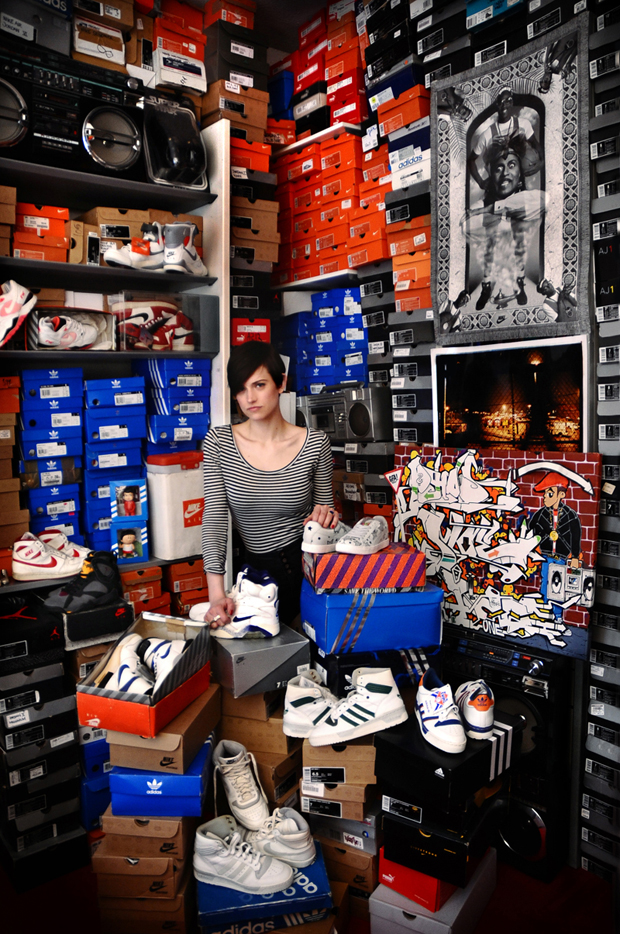
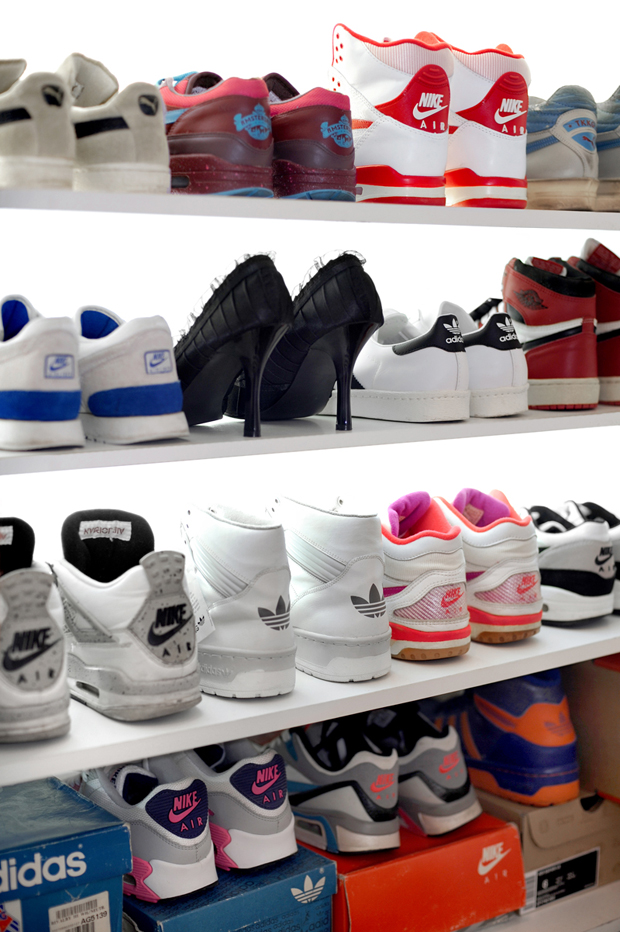
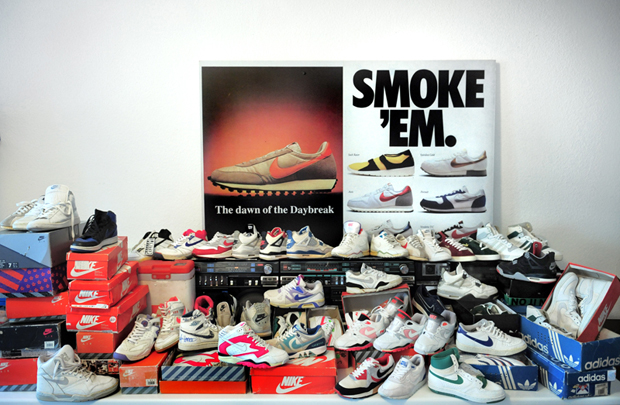

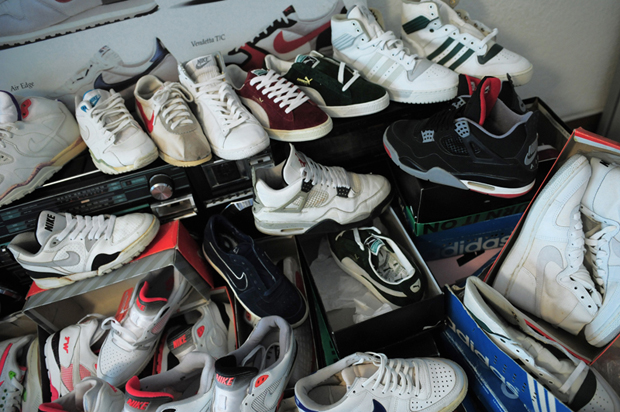
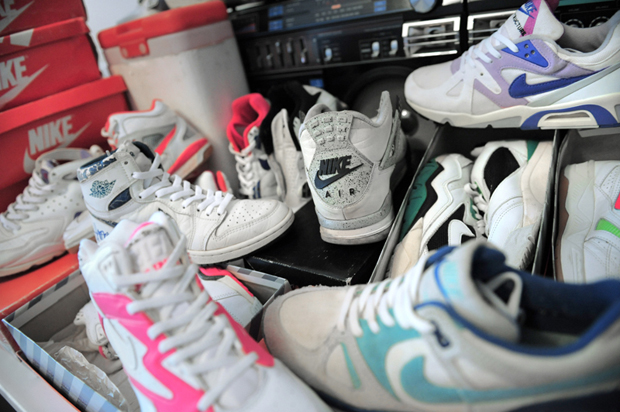

–
On the latest issue of SNEAKERS magazine we got chance to interview one of the most rich and beautiful “sneaker-queens” in the world, Julia Schoierer from Berlin.
How did you earn the nickname “Sneakerqueen”?
I am friends with some graffiti writers who noticed that I am always very concerned about my sneakers and also own quite a few pairs. As the years went by many of them called me Sneakerqueen, since it is normal for that scene to use nicknames and only few girls were into Sneakers. The name soon became my Alter Ego.
Are there more “Sneakerqueens” in Germany?
Not that I know of any. The scene of serious connaisseurs is quite small here in Germany. I know a couple of women who are into sneakers, some very few are even collectors, but I don’t know any who dig deeper. I think it is important to know about the origin, the cultural and historical background of thing that you are seriously interested in. I don’t know of any women in Germany who are into sneakers on that level.
What’s the state of the so-called “sneakers scene” in Germany?
Being the country where two of the most succesful companies on the world-wide market (Adidas and Puma) are originated from, I would like to claim a more specialised position for Germany in the sneaker world, but unfortunqtely it seemes to be just the same as it is worldwide: Many people who follow the trend and hoard more Sneaker than the average consumer, some very few connaisseurs who are seriously ambitious and even less who are on top of that interested in sharing their knowledge and passion.
Did your passion became a job over the years?
It definetly influenced and supported my work so far.
As a photographer and communication designer a lot of my clients are sneaker brands or comapnies from that field of interest. My Alter Ego Sneakerqueen has intorduced me to many intersting people and places in the past, like the sneaker exhibition in Barcelona in 2009. If I wouldn’t have been part of that, we would have never met and I wouldn’t be giving this interview right now…
Do you buy and sell sneakers for profit on a daily basis?
No, I occasionly sell a few hyped retros, if I get my hands on them without queuing up, but that happens very seldernly.
How many pairs do you own?
That will remain a mystery, since I haven’t counted for years. But it’s about the selection, not about the quantity, isn’t it?
What’s the model you’ll never part with, ever?
My Nike Air Jordan IV cement, 1999 retro.
What’s the main fuel for your passion? Is it nostalgia, or something else?
My love for design, a little nostalgia and ego, plus my obsession with matching outfits.
Speaking of nostalgia, what were your favorite sneakers during your teenage years?
As a young girl I wore a lot of Puma Suedes, Clydes and Convers Pro Leather.
I also had some Nike Trainers for playing Tennis; I think they were something like TWs, but I can`t remember since my mom gave them away. Later Adidas Forums or Concords followed by Jordans and Air Max 1s where my favorites.
Favorite sneakers shop?
In Berlin it’s probably Paul’s Boutique (a second-hand store in Berlin, Prenzlauer Berg – http://www.paulsboutiqueberlin.de/) because I love that digging experience.
Do the big brands on the sneakers market pay enough attention to women’s models, in your opinion?
Well, the classic women’s models are often neglected or reshaped by the big brands. For example the sleek series by Adidas is a total rape of the original shape and an absolute deformation in my eyes. But when it comes to colorways it is nice to see that the brands like to experiment and tend to be a bit more daring on women’s models. Unfortunately the colour scemes stay in the “girly pallet” (pink and pastels) most of the time. What is most annoying though is that the main brands like Nike, Adidas, Puma or Reebok had the tendency to limit their sizeruns in the last few years. In the 80’s and 90’s the average men’s sizerun started at a US 6 or 7. Nowadays most stores in US and Germany are only able to order from a US 8 or 8,5 up.

